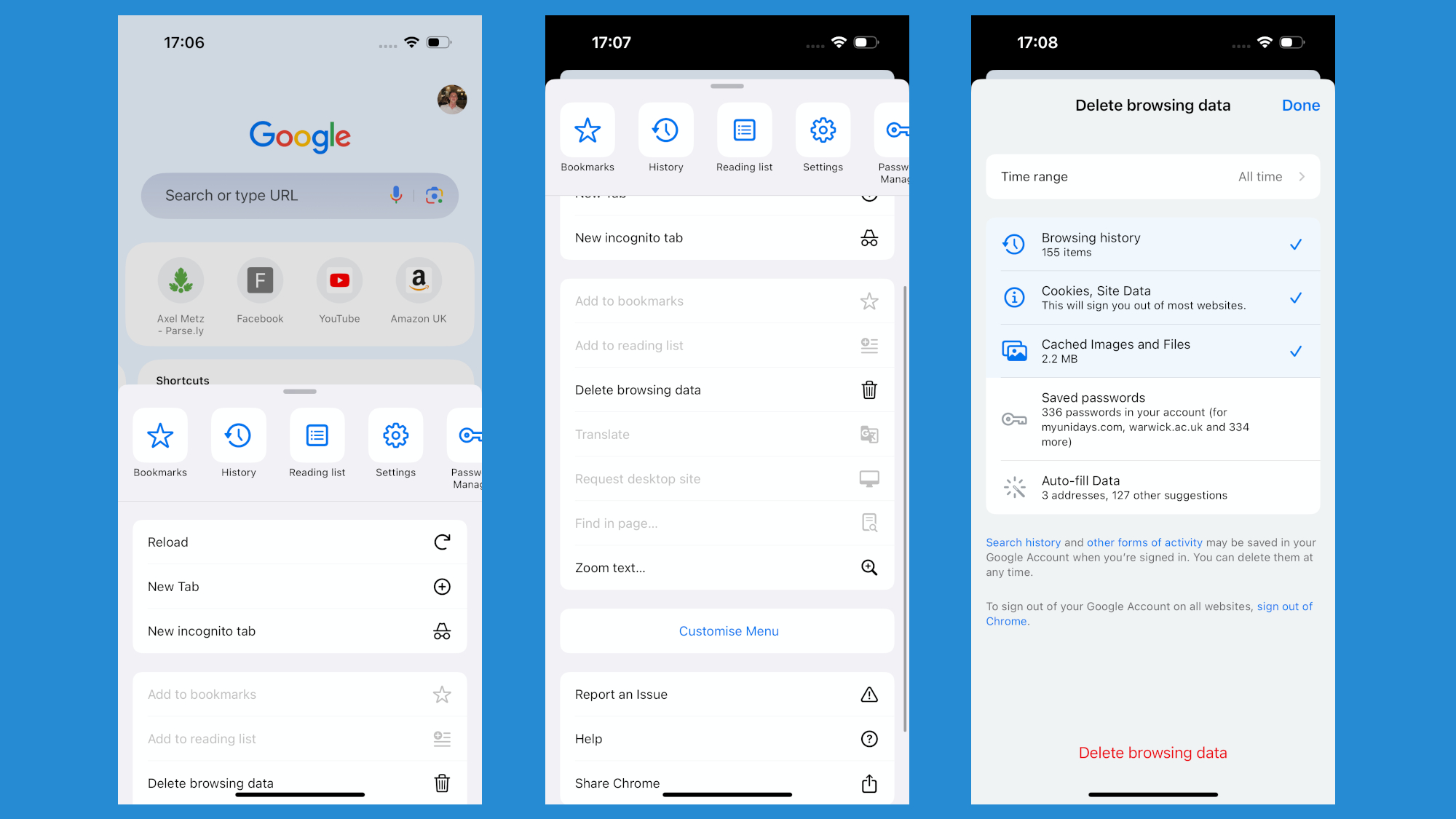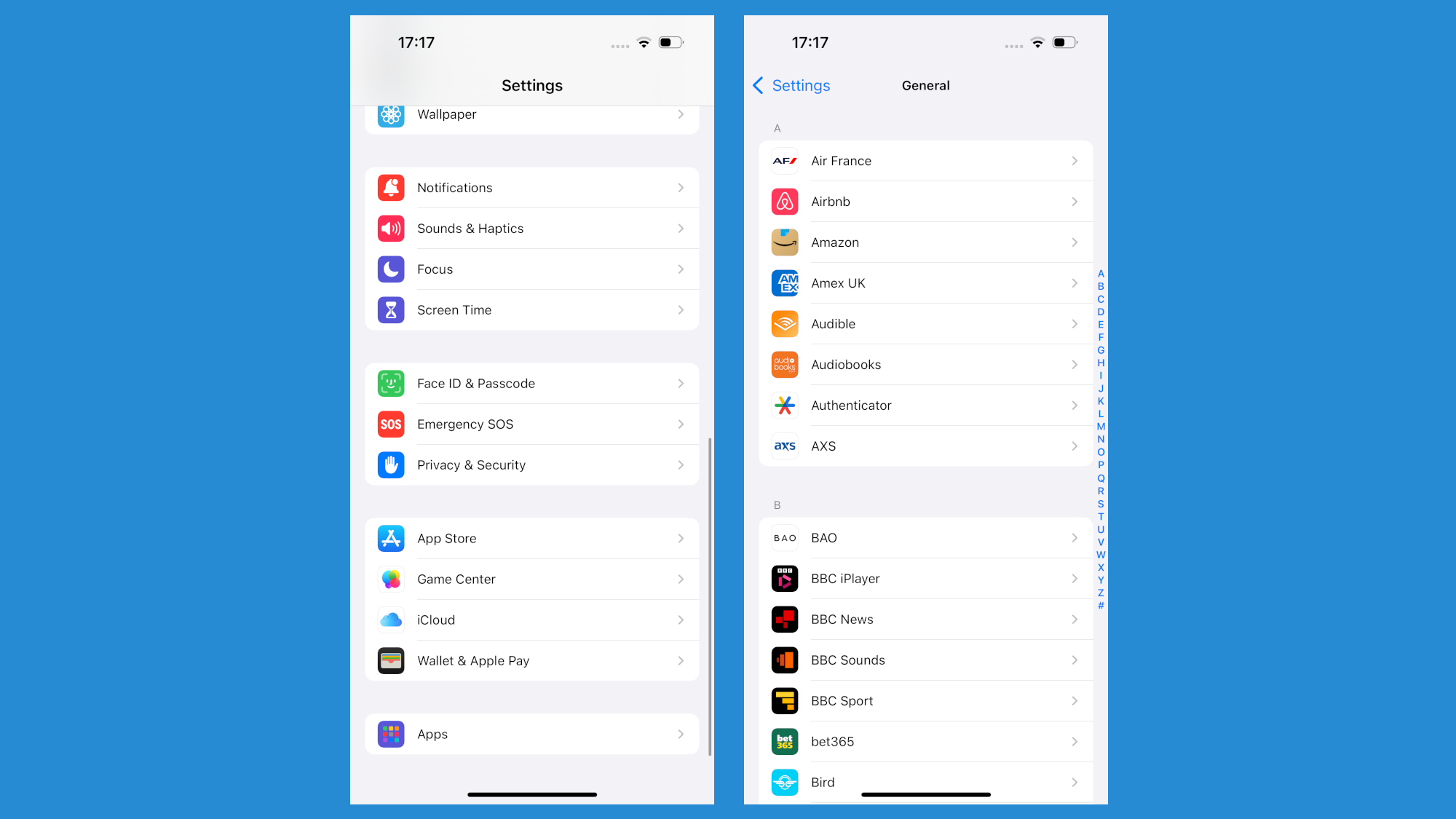How to clear cache on iPhone and iPad
Wash away all your storage-guzzling cookies and data

Knowing how to clear cache on iPhone and iPad is a nifty little skill that'll come in handy when your storage space is dwindling and your device has slowed down.
While there could certainly be a problem with the device itself if you're experiencing either of those problems, more often than not, clearing your cache, history, cookies, or other temporary data from your apps will be enough to get you back up and running again.
We all find ourselves wondering how to free up iPhone storage space at one time or another. Browser apps tend to be huge hoarders that gobble up all sorts of bits and pieces from the various sites you visit and, because they're always hungry, they accumulate more and more over time.
While these cached files can certainly speed things up when you visit a site, they can also cause issues when the site in question has been updated. They also make the app grow well beyond its initial download size. So, it's well worth spring cleaning your iPhone or iPad regularly to keep it functioning optimally.
Regardless of whether it's Safari, Chrome, Firefox, or third-party apps, below, we show you how to clear cache on iPhone and iPad. Once you've followed our steps, you may find our guide to iPhone 'Other' storage: what is it, and how you can delete it helpful if you're looking to create even more valuable space on your device.
Tools and Requirements
- An iPhone
- Your preferred browser (Safari, Chrome, Mozilla Firefox)
Quick steps for how to clear cache on iPhone
- To clear cache in Safari, open Settings, navigate to Safari settings, then select 'Clear History and Website Data'
- To clear cache in Chrome, open the Chrome app, tap the '...' symbol, and select 'Delete browsing data'
- To clear cache in Mozilla Firefox, open the Mozilla Firefox app, tap the three parallel lines, choose Settings, then select Privacy > Data Management
- To clear cache in third-party apps, go to Settings, scroll down to the long alphabetical list of third-party apps (or, if in iOS 18, select the Apps tab), select the app in question, then tap 'Reset Cache on Next Launch' if available
- If the above methods don't work, delete and then reinstall the app in question, and restart your iPhone
Step by step guide
When it comes to time to clear cache on iPhone and iPad, it's worth starting with your browser. Depending on which app is your daily browser of choice, you'll have to use different methods to clean up the leftovers of your recent web surfing.
How to clear cache in Safari

Safari users should open the Settings app and scroll down to Safari settings (which are hidden under the Apps tab in iOS 18). Once there, scroll down to find 'Clear History and Website Data'. Confirm this option, and Safari will remove everything.
While you're here, you can also select 'Advanced Settings' then 'Block All Cookies' to prevent your cache from filling back up with junk you don't need.
Another option is to navigate to Settings > General > iPhone Storage > Safari > Website Data. This will show which websites currently have files downloaded into your cache, including how much individual space they take. You can swipe left to delete individual sites or tap 'Remove All Website Data' to wipe them all out.
How to clear cache in Chrome

For Chrome and Firefox users, you'll need to go into those apps to find the necessary settings to clear cache on iPhone and iPad.
In Chrome, scroll up to make the bottom navigation tab appear, tap the '...' symbol, and select 'Delete browsing data'. Chrome will allow you to delete any or all of the following: browsing history, cookies, site data, cached images and files, saved passwords, or autofill data (like addresses). Toggle your choices and choose 'Delete browsing data' again to finish.
How to clear cache in Mozilla Firefox

In Firefox, tap the three parallel lines in the bottom tab and choose Settings. Go to Privacy > Data Management; there, you can clear Website Data, or clear any of the following Private Data: browsing history, cache, cookies, offline website data, tracking protection, or downloaded files.
How to clear cache in third-party apps

Certain third-party apps have their own built-in browser that can cache data. We can't possibly run through the method for every third-party iPhone app, but some of them do have a useful tool in the iPhone Settings app.
From the main Settings menu, scroll down to the long alphabetical list of third-party apps (or, if in iOS 18, select the Apps tab) and select the app in question. At the bottom of the app's settings, you may see an option to 'Reset Cache on Next Launch'. This option will temporarily wash away the junk you don't need.
If you don't see this option in the app settings – and most don't have it – you'll need to find its own in-app settings menu.
Troubleshooting
If you try to clear cache on iPhone and iPad and find you have no joy, your final resort for a bloated app with no clear way of removing its cache would be to delete and then reinstall the app in question.
Sign up for breaking news, reviews, opinion, top tech deals, and more.
To do this, navigate to Settings > General > iPhone Storage and click on any app. You'll see how much of its storage space is Documents & Data, versus the app itself.

Normally, we recommend offloading older apps, which removes the app but keeps your saved data for later. In this case, the saved data is the problem, and fully deleting the app is your best bet.
Hit 'Delete App' twice, go to the App Store to search for it, then redownload it. The Documents & Data should be reset to only a few MB – at least until you start browsing or importing user data again.
All that said, it's not just your iPhone apps that have a cache. Phones sometimes use your local storage to keep information that helps them complete basic tasks more quickly. This stored shortcut data can accumulate over time.
If your phone seems to be running slowly, then the instructions in our guide to how to reset an iPhone are well worth trying. Not a total reset that wipes out your saved data, mind, but rather turning it off and on again.
On newer phones, that means holding the power button and either of the volume buttons together until the 'Slide to Power Off' option appears; on older models, you just press and hold your power button. Shut it down, then feel free to immediately turn it back on. The iOS cache should be cleared.
Also consider

Michael Hicks began his freelance writing career with TechRadar in 2016, covering emerging tech like VR and self-driving cars. Nowadays, he works as a staff editor for Android Central, but still writes occasional TR reviews, how-tos and explainers on phones, tablets, smart home devices, and other tech.